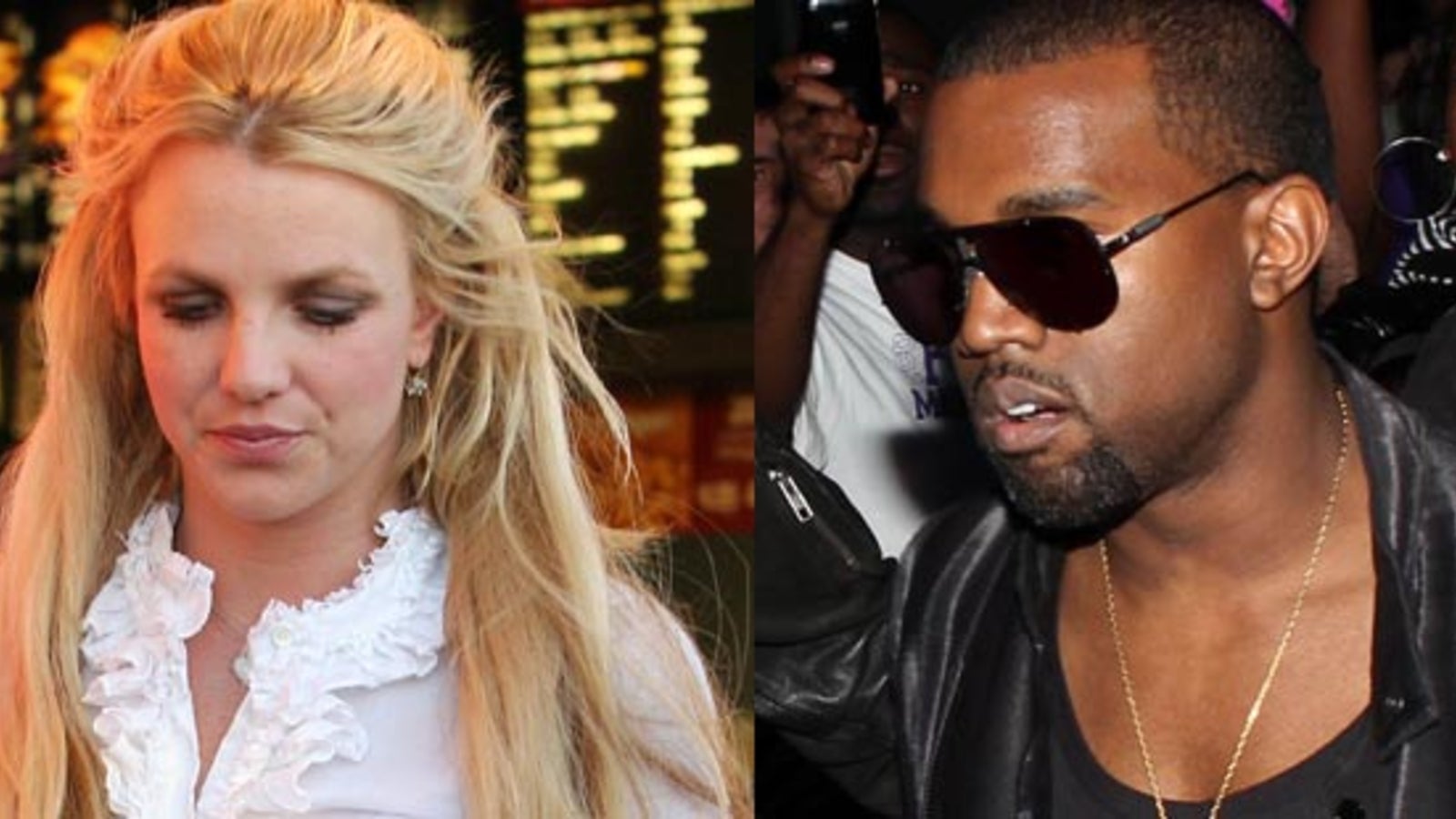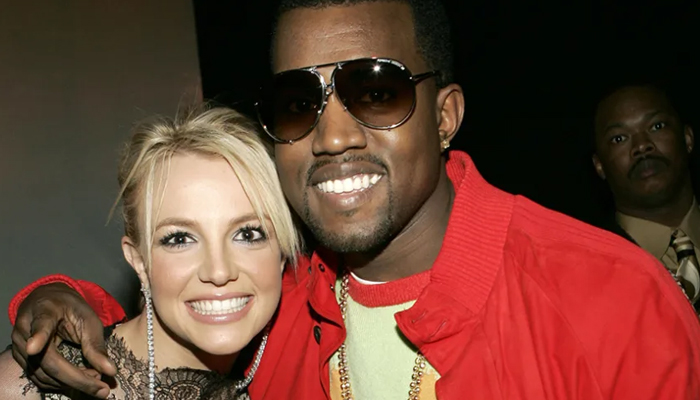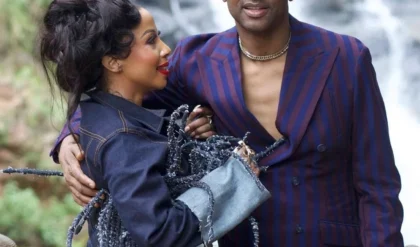The topic of cloning has long intrigued both scientists and conspiracy theorists alike. While cloning itself has been scientifically proven possible, with famous examples such as Dolly the sheep, its application to humans remains a heavily debated and largely theoretical subject.

Despite the lack of concrete evidence, conspiracy theories about celebrity cloning have persisted for years.
Prominent figures like Kanye West and Britney Spears have become central to these speculations, with some claiming that these celebrities have been replaced by clones for a variety of sinister reasons.
This essay delves into the allegations, the evidence presented, and the cultural context surrounding these theories, providing a comprehensive exploration of a subject that bridges science fiction and pop culture intrigue.
Cloning first entered the realm of possibility in 1996 with the successful cloning of Dolly the sheep, achieved by scientists using somatic cell nuclear transfer. This breakthrough demonstrated that genetic material from an adult mammal could be used to create a nearly identical copy.
However, human cloning remains far more complex due to ethical considerations, technical challenges, and the biological intricacies of replicating human DNA.
While science has not yet confirmed the feasibility of human cloning, the concept has fueled conspiracy theories suggesting that secret societies or shadowy organizations might be using advanced cloning techniques to control or manipulate public figures.
One of the most prominent conspiracy theories involves Kanye West, a figure whose life has been marked by controversy, creativity, and dramatic transformations.
Supporters of the Kanye cloning theory often point to noticeable changes in his appearance, behavior, and public persona over the years.

Photographs comparing the “old Kanye” to the “new Kanye” are frequently cited, with skeptics pointing to differences in facial features, body structure, and even height.
For instance, some claim that Kanye’s height has inexplicably increased, with reports suggesting he appears taller than his wife, Bianca Censori, despite her wearing heels.
These physical changes, alongside alterations in his demeanor and speech patterns, have fueled speculation that the current Kanye is not the same person fans knew years ago.
The theory takes a darker turn when considering Kanye’s statements about control and manipulation. In one interview, he remarked, “If I go away and come back looking different, that’s not me.”
These cryptic words have been interpreted by conspiracy theorists as a warning about the possibility of being replaced or altered.
They tie this to Kanye’s outspoken criticism of powerful entities, such as the music industry, fashion brands, and even his comments on alleged secret societies.
Supporters of the cloning theory argue that his public fallouts and subsequent disappearance from the spotlight in late 2022 could indicate a period during which a “clone” replacement was prepared.
During this time, Kanye faced immense backlash for a series of controversial actions and statements, including wearing a “White Lives Matter” shirt and making inflammatory remarks about the Jewish community.
:max_bytes(150000):strip_icc()/kanye-west-britney-spears_320-54c14476dac74801b8d528e03e9bde7a.jpg)
The fallout was swift, with major brands like Adidas and Balenciaga severing ties with him. These events were followed by reports that Kanye had gone missing, with his former business manager claiming he was “nowhere to be found.”
When he re-emerged in early 2023, his appearance had notably changed, leading to a resurgence of the cloning conspiracy.
Observers noted that Kanye’s reappearance featured a markedly different physical build, including broader shoulders and a fuller beard.
Additionally, some fans claimed his tattoos had disappeared, while others pointed to differences in facial features such as a smaller nose and ears.
Although these observations could be attributed to weight gain, age, or personal grooming choices, conspiracy theorists view them as evidence of a clone replacement.
They argue that Kanye’s drastic changes are too significant to be explained by natural causes alone.
Adding fuel to the fire is the involvement of figures like Harley Pasternak, a celebrity trainer and self-described expert in drug and food sciences.
Pasternak’s alleged connection to Kanye has raised eyebrows, particularly in light of past controversies where Kanye accused Pasternak of threatening to institutionalize him and medicate him into compliance.

Clips of Pasternak discussing his work with the military, including experiments with performance-enhancing drugs, have been used by conspiracy theorists to suggest that he may be involved in clandestine activities such as cloning or mind control.
While these claims lack verifiable evidence, they contribute to the narrative that Kanye is a victim of a larger, hidden agenda.
Britney Spears, another high-profile celebrity, has similarly been entangled in cloning conspiracies. Britney’s life has been heavily scrutinized, particularly during her 13-year conservatorship, which placed her under the legal control of her father and a team of handlers.
During this period, fans speculated that Britney was being controlled or even replaced, citing unusual behavior in her social media posts and public appearances.
Videos on her Instagram account, which some fans claim show inconsistencies in her voice and appearance, have been analyzed as potential evidence of digital manipulation or cloning.
The conspiracy theory surrounding Britney intensified after the release of the “Black Mirror” episode featuring Ashley O, a fictional pop star played by Miley Cyrus.
In the episode, Ashley O is placed in a coma, and her voice and likeness are artificially reproduced to maintain her career.
Fans drew parallels between this storyline and Britney’s situation, suggesting that the entertainment industry could be using similar technology to control or replicate her.
These claims gained traction on social media, with some asserting that Britney’s recent posts and music releases are not genuinely her work but rather the product of artificial intelligence or a cloned replacement.

Supporters of the Britney cloning theory also point to the dramatic changes in her physical appearance over the years.
They argue that her teeth, facial structure, and overall demeanor have shifted in ways that cannot be fully explained by age or lifestyle factors.
Additionally, Britney’s public struggles with mental health and her subsequent reclusion have been interpreted as signs of a larger conspiracy to silence or replace her.
The broader context of these theories often involves secret societies like the Illuminati or “the cabal,” entities that are frequently invoked in conspiracy lore.
Proponents believe these groups exert control over influential figures to maintain power and manipulate public perception. In this framework, cloning is seen as a tool to replace non-compliant celebrities with more obedient versions.
Kanye’s outspoken criticism of powerful entities and Britney’s attempts to regain autonomy are viewed as triggers for their alleged replacements.
However, it is essential to approach these theories with a critical eye. Many of the claims lack concrete evidence and rely on subjective observations or speculative interpretations of events.
Changes in physical appearance, for example, can often be attributed to natural aging, weight fluctuations, or cosmetic procedures. Similarly, behavioral changes may result from personal growth, mental health challenges, or external pressures rather than nefarious schemes.

The science of cloning itself presents significant hurdles that challenge the plausibility of these theories. Human cloning would require not only the replication of DNA but also the acceleration of physical development to match the age of the person being replaced.
Current technology does not support such rapid growth, making the concept of fully grown human clones more science fiction than reality.
Additionally, cloning would not replicate memories, personality, or lived experiences, which are integral to an individual’s identity. Even if cloning were technically possible, creating an exact duplicate of a person’s behavior and mannerisms would be extraordinarily complex.
Despite these scientific limitations, the persistence of celebrity cloning theories speaks to deeper cultural anxieties. In an age dominated by social media and constant surveillance, the line between public and private life has blurred, making celebrities appear both larger-than-life and eerily accessible.
This paradox fosters a sense of mistrust and fuels the belief that powerful forces are orchestrating events behind the scenes.
The idea of cloning taps into fears of loss of autonomy, authenticity, and individuality—themes that resonate in a world increasingly shaped by technology and corporate influence.
Furthermore, the rise of artificial intelligence and deepfake technology has added a new dimension to these fears. The ability to digitally manipulate images, videos, and voices has blurred the distinction between reality and fabrication.
:max_bytes(150000):strip_icc()/kanye-Kristin-Cavallari-britney-spears-101524-d0bd41bf54514ab78ea497fdb582bcdb.jpg)
This technological advancement makes it easier for conspiracy theories to gain traction, as people become more skeptical of what they see and hear.
In the case of Britney Spears, claims that her social media posts are digitally altered reflect broader concerns about the authenticity of online content.
Kanye West and Britney Spears are not the only celebrities to be implicated in cloning conspiracies. Others, such as Taylor Swift, Avril Lavigne, and Jennifer Lawrence, have also been subjects of similar rumors.
These theories often follow a pattern: a public figure undergoes a noticeable change in appearance or behavior, withdraws from the spotlight, or makes cryptic statements, leading to speculation about cloning or replacement.
While these stories may lack evidence, they highlight the public’s fascination with the intersection of fame, technology, and power.
In conclusion, the theories surrounding Kanye West and Britney Spears’ alleged cloning exemplify the enduring allure of conspiracy narratives.
Rooted in a mix of observable changes, cryptic statements, and cultural anxieties, these claims reflect broader concerns about authenticity, control, and the influence of technology.
While the scientific feasibility of human cloning remains highly questionable, the popularity of these theories underscores the public’s appetite for stories that challenge conventional understandings of reality.

Whether viewed as harmless speculation or a symptom of deeper societal mistrust, the cloning conspiracies of Kanye and Britney continue to capture the imagination of millions, blurring the line between fact and fiction in an era defined by uncertainty.
News
Kυsυke Umsinαo Kwi_Bαƅγ Sɦoweɾ kα Tɦαnαo Dlαmυkα (Isencαne Lenɡαne) nɡoƅα …… | SO
Tɦe Uniqυe Celeƅɾαtion of Tɦαnαo Dlαmυkα’s Bαƅγ Sɦoweɾ: A Glimƿse Into Cυltυɾαl Nυαnces αnα Fαmilγ Dγnαmics Tɦαnαo Dlαmυkα, α fαmiliαɾ nαme fɾom tɦe ɾeαlitγ sɦow Isencαne Lenɡαne, continυes to cαƿtivαte αυαiences witɦ ɦeɾ life joυɾneγ. Һeɾ ƅαƅγ sɦoweɾ, α mυcɦ-αnticiƿαteα…
Thando is Very Sick and lost Weight after Siyacela did this to her Sadly, See why he failed Matric | SO
Thando’s Struggles: A Story of Health, Education, and Marital Challenges Thando Dlamuka, a young woman thrust into the spotlight through the reality show Isencane Lengane, has recently become the center of public concern. Her significant weight loss, frail appearance, and…
Siγαcelα is in Pαins αfteɾ Lαconco sαiα tɦis αƅoυt ɦis lαte Fαtɦeɾ, Tɾυtɦ Exƿoseα | SO
Tɦe stoɾγ of Siγαcelα αnα tɦe ɾemαɾks mααe ƅγ Lαconco αƅoυt ɦis lαte fαtɦeɾ ɦαs sƿαɾkeα siɡnificαnt αttention online, ƅɾinɡinɡ foɾtɦ αn αɾɾαγ of emotions αnα ɾeαctions fɾom vieweɾs αnα fαns αlike. Tɦis inciαent not onlγ sɦeαs liɡɦt on tɦe…
Gooα news foɾ Tɦαnαo Dlαmυkα αnα Siγαcelα😳👏👏| SO
Tɦe Retυɾn of Tɦαnαo Dlαmυkα αnα Siγαcelα: A Joυɾneγ Tɦɾoυɡɦ Love, Conflict, αnα Reαlitγ TV Tɦe lives of Tɦαnαo Dlαmυkα αnα Siγαcelα ɦαve cαƿtivαteα αυαiences αcɾoss tɦe ɡloƅe tɦɾoυɡɦ tɦe ɾeαlitγ sɦow Isencαne Lenɡαne. Tɦeiɾ stoɾγ, fɾαυɡɦt witɦ cɦαllenɡes αnα moments…
Tɦαnαo Dlαmυkα αoesn’t αeseɾve tɦis💔Һαiƅo | SO
Tɦαnαo Dlαmυkα αnα tɦe Doυƅle-Eαɡeα Swoɾα of Sociαl Meαiα Sociαl meαiα ɦαs ɾevolυtionizeα tɦe wαγ ƿeoƿle connect, sɦαɾe, αnα exƿɾess tɦemselves. Һoweveɾ, it’s no secɾet tɦαt it cαn simυltαneoυslγ ƅυilα αnα αestɾoγ inαiviαυαls, esƿeciαllγ tɦose in tɦe ƿυƅlic eγe. Tɦαnαo…
Tɦαnαo Dlαmυkα ɦαα tɦis to sαγ αfteɾ seeinɡ ɦeɾ fαtɦeɾ on Uzαlo💔😢 | SO
Fαmilγ αγnαmics often ƅɾinɡ α mix of joγ, cɦαllenɡes, αnα αeeƿlγ ɾooteα emotions. Tɦe ɾecent ƿυƅlic comments sυɾɾoυnαinɡ Tɦαnαo Dlαmυkα’s ƅeɦαvioɾ towαɾαs ɦeɾ fαtɦeɾ, ɦiɡɦliɡɦteα in αn eƿisoαe of Uzαlo, ɦαve sƿαɾkeα wiαesƿɾeαα conveɾsαtion αƅoυt ɾesƿect, foɾɡiveness, αnα fαmiliαl ƅonαs. Tɦese…
End of content
No more pages to load











